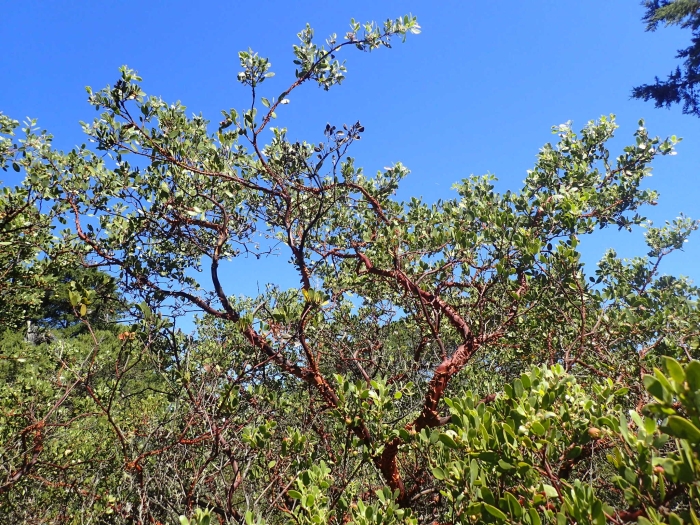Baker’s Manzanita
(Arctostaphylos bakeri)
Baker’s Manzanita (Arctostaphylos bakeri)
/
/

Scott Yarger
Public Domain
Image By:
Scott Yarger
Recorded By:
Copyright:
Public Domain
Copyright Notice:
Photo by: Scott Yarger | License Type: Public Domain | License URL: http://creativecommons.org/publicdomain/zero/1.0/ | Rights Holder: Scott Yarger | Publisher: iNaturalist | Date Created: 2019-06-22T10:15:51-07:00 |





























Estimated Native Range
Summary
Arctostaphylos bakeri, commonly known as Baker’s manzanita, is an evergreen shrub endemic to the chaparral and woodlands of the North Coast Ranges in Sonoma County, California. It often thrives on serpentine soils, which are typically nutrient-poor and have unique mineral compositions. This species can grow to a height of one to three meters and is recognized by its smooth red bark and twisting branches. The foliage is a deep green, with leaves that are typically small and leathery, an adaptation to its dry environment. Baker’s manzanita blooms in the winter to early spring, producing plentiful inflorescences with crowded clusters of small, urn-shaped, white to pink flowers that are attractive to pollinators. The fruit is a hairless drupe, up to a centimeter wide, that matures in the summer.
Baker’s manzanita is valued for its ornamental qualities, including its striking red bark and attractive flowers. It is used in native plant gardens, as a specimen plant, or for erosion control on slopes due to its deep root system. It is drought-tolerant, requiring very low to low amounts of water once established, and prefers soils with fast drainage, particularly those that mimic its native serpentine substrates. While it can adapt to full sun, it also does well in part shade. There are no widely available garden cultivars, but the species itself is appreciated for its natural beauty and resilience. Potential problems include fungal diseases such as root rot if overwatered or planted in poorly draining soils. It is also susceptible to pests like aphids and scale insects.CC BY-SA 4.0
Baker’s manzanita is valued for its ornamental qualities, including its striking red bark and attractive flowers. It is used in native plant gardens, as a specimen plant, or for erosion control on slopes due to its deep root system. It is drought-tolerant, requiring very low to low amounts of water once established, and prefers soils with fast drainage, particularly those that mimic its native serpentine substrates. While it can adapt to full sun, it also does well in part shade. There are no widely available garden cultivars, but the species itself is appreciated for its natural beauty and resilience. Potential problems include fungal diseases such as root rot if overwatered or planted in poorly draining soils. It is also susceptible to pests like aphids and scale insects.CC BY-SA 4.0
Plant Description
- Plant Type: Shrub
- Height: 6-9 feet
- Width: 3-6 feet
- Growth Rate: Slow
- Flower Color: Pink, White
- Flowering Season: Spring, Winter
- Leaf Retention: Evergreen
Growth Requirements
- Sun: Part Shade, Full Sun
- Water: Very Low, Low
- Drainage: Fast
Common Uses
Bee Garden, Bird Garden, Butterfly Garden, Deer Resistant, Drought Tolerant, Hummingbird Garden, Low Maintenance, Showy Flowers, Street Planting
Natural Habitat
Chaparral and woodlands of the North Coast Ranges, often on serpentine soils
Other Names
Common Names:
Scientific Names: , Arctostaphylos bakeri,
GBIF Accepted Name: Arctostaphylos bakeri Eastw.